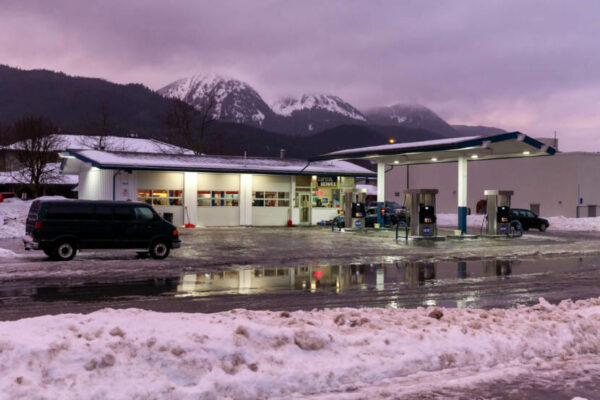
If you drive a car, you’ve likely noticed your wallet taking more of a hit at the gas station in the last few weeks.
In Alaska, the average for a gallon of regular gas was $4.73 Monday, according to AAA. That’s up a dollar a gallon from just a month ago.
The recent spike is due to the Russian invasion of Ukraine, said Larry Persily, a former federal coordinator of the Alaska Natural Gas Transportation Projects, who has long tracked oil and gas markets.
“Markets were already tight. Buyers, traders, consumers of crude oil were already nervous about not enough supply driving up prices. And then you throw a war into the mix and the unpredictability of that,” Persily said. “The question becomes, do countries stop importing Russian crude? What will that do to supply? What will that do to prices?”
President Joe Biden announced a ban on Russian imports of oil and natural gas last week. He warned the move would likely drive up gas prices.
Persily said to expect volatility.
After months of incremental bumps, a barrel of Alaska North Slope shot up to $125 last week. A day later, he said, the markets reconsidered, and it dropped to $110 — still high compared to this time last year, when a barrel was less than $70.
“So we’re going to have to get used to volatility for a while,” said Persily.
Persily said consumers will feel the impact of higher oil prices at the gas pump, and elsewhere.
“Freight costs are going to be moving up. If you’re a grocery store, the store will have to pay more to ship up its containers of groceries, and at some point that’s got to pass on to consumers. When you’re talking $120 oil there’s nothing that escapes it,” he said.
Persily said there are a few things that could help temper the surge in oil prices — supply could go up, like if the U.S. or other countries release more crude oil from their strategic reserves. Or demand could come down because prices get so high, consumers aren’t willing to pay for it anymore.
“That’ll be something to watch for,” Persily said. “If gasoline prices stay at $4.50 or $5 a gallon, will Americans take summer driving trips? Will they get in the RV and come to Alaska? At some point, you say it costs too much to fill up that tank and you don’t take the trip.”
There are too many unknowns with the conflict in Ukraine changing every day. For now, Persily said, he doesn’t expect prices at the pump to plummet in the next few weeks.
[Sign up for Alaska Public Media’s daily newsletter to get our top stories delivered to your inbox.]
Kavitha George worked at Alaska Public Media from 2021 to 2024. Her coverage areas included statewide politics and climate change.





